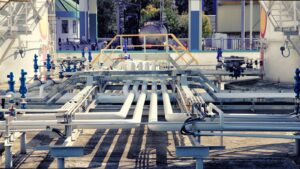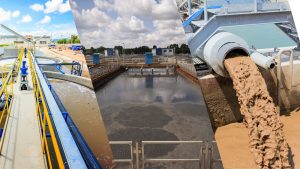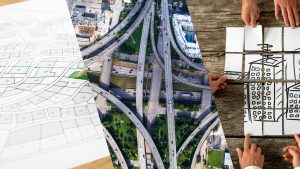New-age technologies are instrumental in optimising a series of industrial domains; therefore, they have been phenomenally impactful in addressing the most pressing issues in multidisciplinary and intricate water challenges. Having competent technology that can be effectively integrated into your Water Asset Solution is crucial. Learning about how these technological capabilities can facilitate the water industry will help you understand how to optimise the water management strategies of your city, state or country.
The Top Ten Technologies for Your Water Asset Solution
Numerous technologies make it possible for water service enablers. Some of them, however, are modern innovations that provide water service enablers with tremendous strength, potential, and capacity to maintain untarnished public trust. Here are ten technologies that will provide incredible benefits to your Water Asset Solution.
Artificial Intelligence
To maximise management and maintenance efforts of asset infrastructure in the catchment, treatment, distribution, and reticulation systems, Smart Water Solutions need AI-driven technology tools. AI tools optimise the managing and maintaining efforts of asset infrastructure in the catchment, treatment, distribution and reticulation systems. They are the finest in tailoring investment profiles that cover all budget scenarios in the 10 years ahead to guide decision-makers with the most cost-effective and resourceful asset investment strategies. AI tools are advanced in predicting pipe bursts by autonomously processing water pressure and flow data. With this technical advancement, pipe operators can have access to information regarding the likelihood of pipe burst events, which will help them plan effective maintenance and inspection methods and raise alerts when it is most convenient.
Algae Detection
Water Asset Managers can use competent in-situ fluorometers with algal detection technology to obtain real-time statistics on the behaviours of algae blooms in water supply systems. The substantial Algae Detection Tools and Technologies validate real-time treatment process exertions based on the criticality of algae blooms and prescribe reactive chemical adjustments based on event-based algae spreads. The insightful information visualised by smart monitoring tools will help water specialists to deduce algae influence rates in pure water and ensure that the water quality and quantity of your water supply systems are up to the required standards. The most trustworthy solution for guaranteeing that your water services are supplied on time and without interruption to your customers’ taps and are in the greatest possible health and safety conditions is Algae Detection Technology.
CCTV and Laser
Smart Water Solutions’ CCTV and Laser Technologies make it simple for pipe operators to identify pipe conditions. To see pipe fading rates, pipe pothole widths, pipe damages, pipe seams, pipe crack lengths, and many other pipe structural parameters that should not be disregarded while assessing pipe health, it will be possible for them to provide visual footage and laser readings of various pipes. With the help of this capability, pipe inspectors may remotely inspect pipes, saving significant amounts of time, money, and effort. Water asset managers can locate water supply and reticulation networks that are actively deteriorating by using IIoT-powered CCTV and laser technology. Australia is at the forefront of Smart Water Asset Technologies with CCTV and Laser Analytics. This system is unmatched because it provides precise installation, manoeuvre, maintenance, and replacement insights based on pipe specs and environmental factors.
Digital Twin
Water service administrators can engage with virtual models using digital twin models to make sure that all communities have access to ample and clean water all the time. Through a virtual depiction of the structural model and the dynamics of its physical counterpart, this technology enables asset managers to observe a physical element—a machine, infrastructure, valve, pump, compressor, etc.—or a system—the treatment facility as a whole. Any asset manager can customise a digital replica of an asset to observe all the structural and operational characteristics in real-time. This is a visualisation luxury. For instance, they can view the performance of each asset at a treatment centre using this technology. They can view the real-time OEE levels, water quality levels, asset integrity levels, schedules and other data related to the facility under one glass plane.
GIS
GIS technology tools enable Smart Water Asset Solutions to tell the various stories of various sites. Smart Water Asset Solutions’ dynamic GIS maps may be programmed to highlight flood occurrences, dangerous pipes, pipe breaks, urgent maintenance needs, and other notable city-scale information on a single glass pane. Water utility providers can utilise this technology to uncover asset status patterns and trends that standard human reporting capabilities cannot find due to enhanced location-centric information about water infrastructural networks. Users of GIS technology tools may make sure their communities are safe and secure and regularly monitor whether their water services are providing enough water to fulfil demand in excellent condition.
IIoT
IIoT enables water utility professionals to get past the obstacles and constraints that prevent flawless service delivery. The majority of solutions use IIoT technology to transform water utility operations through drastically improved, more intelligent, and perceptive judgments. This solution uses intelligent data network technologies to empower event-driven analytical capabilities and real-time monitoring capabilities, ensuring that no energy is wasted in enabling services, even during dynamic water delivery events. Advanced interoperability between assets in all areas of the water infrastructure, starting with the catchment, distribution, treatment, and reticulation, is made possible by IIoT technology. With the best water leak detection and prediction, water quality testing, transparency in investment profiling, prescriptive maintenance during certain events, and more, water utility specialists make wiser decisions.
Predictive and Prescriptive
User-defined prediction capabilities and prescriptions are empowered by predictive and prescriptive analytics technologies. The Predictive and Prescriptive technologies work with real-time asset data to estimate likely future asset scenarios, allowing your water systems to achieve the highest operating efficiencies. To enable asset predictions with different factors, predictive technology tools are trained in actual water infrastructure scenarios. They accurately foresee patterns of water asset degradation, dangers, breakdowns, performance decreases, and other parametric behaviours. When used in conjunction with simulation technology, the predictive tools also frequently display expected asset parameters. The training of the prescriptive analytics tools will take into account the particular risk management and maintenance practise at your water utility centre.
Satellite Data Analytics
Multispectral technologies are used to test water quality; they use remote sensing photos to determine whether water is polluted or contaminated by natural or man-made disasters (like blue-green algal bloom growth). In situ observations can be used to generate comprehensive hydrological models that represent biological and hydrodynamic data by correlating them with satellite imagery. With improved knowledge of raw water quality rates, satellite technologies aid water quality assurance teams in optimising water treatment plants. They can increase the effectiveness of water purification and reclamation centres by combining remote sensing data with AI algorithms. Data scientists can develop early warning systems that notify water quality assurance teams and water utility service providers of unsatisfactory water quality levels by advancing satellite models with AI and ML algorithms.
Sensors
Water asset managers may examine sensor-driven asset data immersively thanks to smart sensor technology’s advanced integration with AI and ML models, GIS maps, digital twin technology, and other technological advantages. The water quality and quantity sensors allow your infrastructure managers to check that the levels of water quality and quantity are within desired limits and to promptly warn you if an anomaly is found. For instance, there is a danger that your dam could topple under unfavourable weather conditions, but the sensor technology will automatically alert gate and valve operators to take the necessary precaution to keep dam water levels below acceptable limits. These sophisticated sensors can detect variables such as temperature, BGA levels, turbidity, pH and conductivity levels, chlorine levels, and more.
Cloud Computing
Several utilities have increased their adoption of digital technology, such as IoT sensors, cloud computing, and machine learning applications, in recent years. The foundation for changing how we use the hydraulic model is provided by these essential technologies. The model may be run continuously because of the increased processing power of cloud computing, and it can be calibrated to behave like the real system using ongoing “pairing” of operational data collected in close to real-time from the physical system. Cloud computing and storage, neural networks, and machine-learning algorithms are among the technological advancements that data-driven, smart water technologies are fast embracing. This is upending traditional asset planning procedures and fostering a new paradigm for municipal water. These solutions may make it possible for utilities to simulate long-term asset deterioration, identify asset failure risks, and allocate long-term capital deployment more effectively.
Take The First Step
Water is a vital resource, especially now that severe environmental changes are making it scarce everywhere; for this reason, protecting water resources is crucial in every nation. The aforementioned technologies help water utility service providers become more resilient to a variety of problems, including water contamination, water waste, spontaneous water infrastructure failure, and severe environmental changes. By entrusting technology-driven solutions, water quality experts and managers should establish national goals on guaranteeing equitable access to drinkable water, better water quality and quantity, reducing water shortages, and optimising water-related ecosystems. Technology has already made significant contributions to solving some of the world’s most serious water problems; as a result, it will unavoidably play a role in guiding the world toward a water-preserving future. Will you take that first step to go towards the water technologies of the future?







